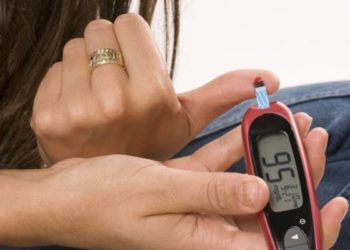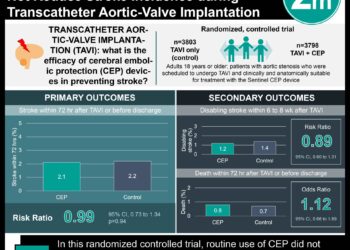2 Minute Medicine Rewind September 26, 2016
Trial of decompressive craniectomy for traumatic intracranial hypertension
Elevated intracranial pressure caused by traumatic brain injury is treated either medically or via decompressive craniectomy, a surgical procedure in which a large portion of the skull is removed and the underlying dura mater is opened. In this international, multicenter randomized trial, researchers studied the effects of decompressive craniectomy or continued medical care in patients with refractory intracranial hypertension (>25 mm Hg) on Extended Glasgow Outcome Scale (GOS-E) ratings at 6 months. From 2004 to 2014, 408 patients, 10 to 65 years of age, were randomized to either the surgical group (n = 206) or medical group (n = 202). At 6 months, GOS-E distributions indicated that death rates were 26.9% in the surgical group and 48.9% in the medical group. Other measures were as follows: 8.5% of surgical patients vs. 2.1% of medical patients entered vegetative state; 21.9% vs. 14.4% had lower severe disability (dependent on others for care); 15.4% vs. 8.0% had upper severe disability (dependent at home); 23.4% vs. 19.7% had moderate disability; 4.0% vs. 6.9% had good recovery. This study concluded that decompressive craniectomy resulted in increased survival but higher rates of vegetative state, lower severe disability, and upper severe disability. This information should be made known to clinicians and patients’ family members when making treatment decisions.
Effect of wearable technology combined with a lifestyle intervention on long-term weight loss
There has been a rise in commercial technologies that help track fitness in recent years. This intriguing study examined the hypothesis that a technology-enhanced weight loss intervention would result in greater weight loss when compared to a standard intervention over the long term. In this randomized trial, 471 young adults aged 18 to 35 years (BMI 25 to <40, 29.9% nonwhite, 77.2% women) were randomized in a 1:1 ratio to either weight loss intervention or weight loss intervention with the assistance of wearable technology. For the first six months, all participants began a low-calorie diet, physical exercise, and weekly group counseling sessions. Beginning month 7, participants in the standard intervention group initiated self-monitoring of diet and physical exercise using a website, while participants in the technology-enhanced group initiated tracking with a wearable device and accompanying web interface. Surprisingly, after 24 months, investigators found that the technology-enhanced group exhibited less weight loss (3.5 kg, 95% CI: 2.6 to 4.5 kg) compared to the standard group (5.9 kg, 95% CI: 5.0 to 6.8 kg), with a difference of 2.4 kg (95% CI: 1.0 to 3.7, p = 0.002). Therefore, this trial provides evidence that in young adults, wearable technology may not give as favorable an advantage as previously believed over traditional weight loss approaches.
Nasal high-flow therapy for primary respiratory support in preterm infants
While nasal high-flow therapy has been shown to be similarly efficacious as continuous positive airway pressure (CPAP) in neonates after extubation, its use as the primary method of respiratory support has not been extensively studied. In this international, multicenter randomized control trial, 564 preterm infants (gestational age 28 weeks to 36 weeks and 6 days) with early respiratory distress who had not yet received surfactant treatment were randomized in a 1:1 ratio to nasal high-flow therapy or CPAP. To assess whether nasal high-flow therapy would be non-inferior to CPAP, researchers measured a primary outcome of treatment failure within 72 hours. If treatment failure occurred, those patients on high-flow were placed on CPAP, and those failing CPAP underwent mechanical ventilation as necessary. The high-flow group failed treatment at a significantly higher rate than the CPAP group (25.5% vs. 13.3%, 95% CI: 5.8 to 18.7, p < 0.001). Apart from increased nasal trauma in the CPAP group, intubation rates and other adverse events did not differ significantly. Investigators concluded that nasal high-flow therapy resulted in more treatment failures and was inferior to nasal CPAP for primary respiratory support in preterm neonates.
There is limited current evidence regarding the usage of β-blockers on patients with acute myocardial infarction with preserved left ventricular function. What’s more, most trials involving β-blockers in patients with acute MI were performed several decades ago before the onset of reperfusion therapy or secondary prevention drugs such as statins were available. In this prospective cohort study, investigators analyzed 2679 patients with acute MI without heart failure or left ventricular dysfunction by looking at the Nationwide French Registry of Acute ST- and non-ST-elevation Myocardial Infarction (FAST-MI) 2005 to assess β-blockers’ effect on short and long term mortality. A significant reduction in 30 day mortality was observed among patients who received β-blocker treatment early (within 48 hours of admission) (HR 0.46, 95% CI: 0.26 to 0.82). A non-significant reduction in one year mortality was associated with giving β-blockers at discharge (HR 0.77, 95% CI: 0.46 to 1.30). Furthermore, continuing β blockers for one year did not yield a lower five year mortality rate (HR 1.19, 95% CI: 0.65 to 2.18), but continuing statins for one year did, compared to those who discontinued treatment (HR 0.42, 95% CI: 0.25 to 0.72). This study confirms the benefits of early β-blocker use for acute MI without heart failure or left ventricular dysfunction, but calls into question the utility of its prolonged treatment over time.
Although tumor necrosis factor α (TNF-α) inhibitors are commonly utilized for rheumatoid arthritis treatment, approximately one-third of patients have an insufficient response. In this randomized control trial conducted between 2009 and 2012, 300 patients with rheumatoid arthritis refractory to a first anti-TNF drug were randomized in a 1:1 ratio to either a non-TNF-targeted biologic agent or a second anti-TNF agent, with the choice of exact agent left to the treating clinician. The primary outcome measured was the proportion of patients who had good or moderate response according to the European League Against Rheumatism (EULAR) scale at week 24. 69% of the patients in the non-TNF-targeted group exhibited a good or moderate response, compared to only 52% of patients in the second anti-TNF group (OR 2.06, 95% CI: 1.27 to 3.37, p = 0.004). In addition, secondary outcomes showed that the disease activity score in 28 joints-erythrocyte sedimentation rate (DAS28-ESR) was significantly lower in the non-TNF group (mean difference of -0.43, 95% CI: -0.72 to -0.14, p = 0.004). Although this study was limited by the lack of a standardized treatment regimen, the authors conclude that a non-TNF-targeted agent may be a better option for patients who do not respond to a first TNF-α inhibitor than trying another one of the same class.
Image: PD
©2016 2 Minute Medicine, Inc. All rights reserved. No works may be reproduced without expressed written consent from 2 Minute Medicine, Inc. Inquire about licensing here. No article should be construed as medical advice and is not intended as such by the authors or by 2 Minute Medicine, Inc.







